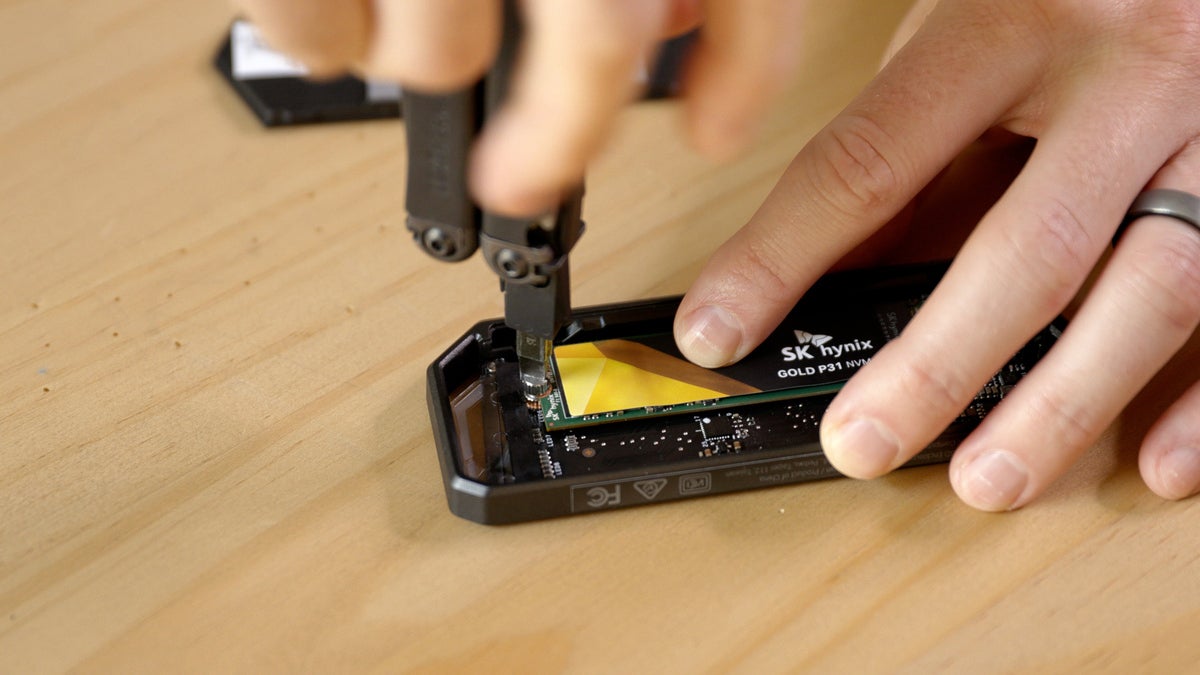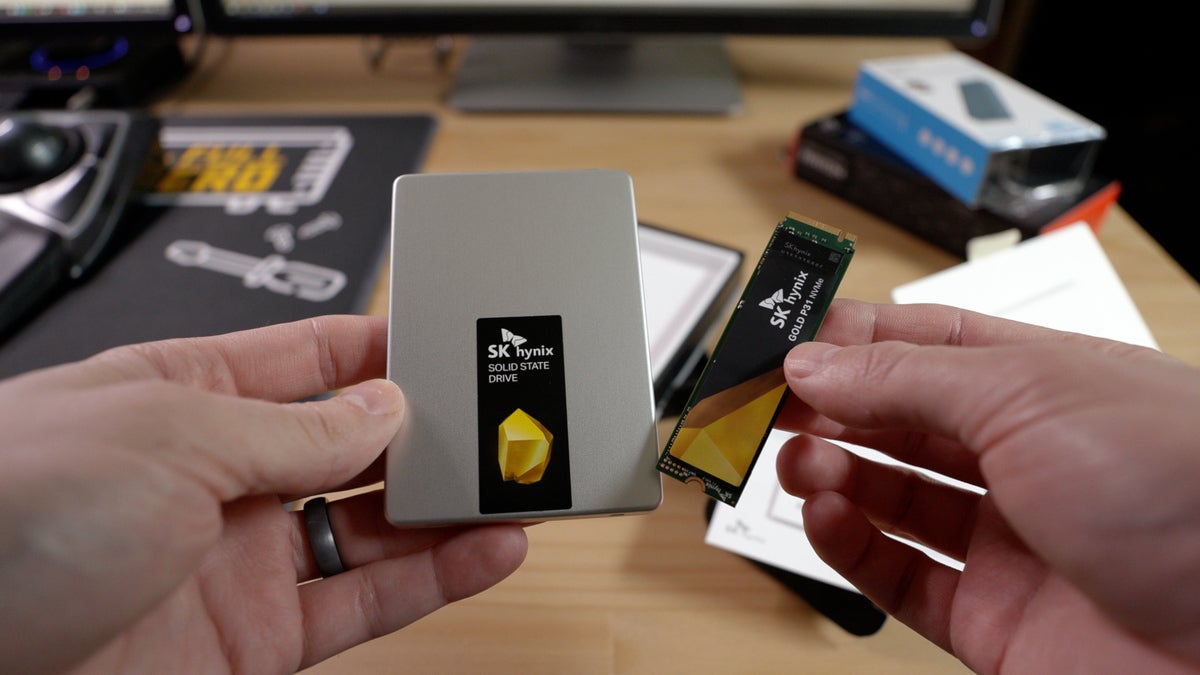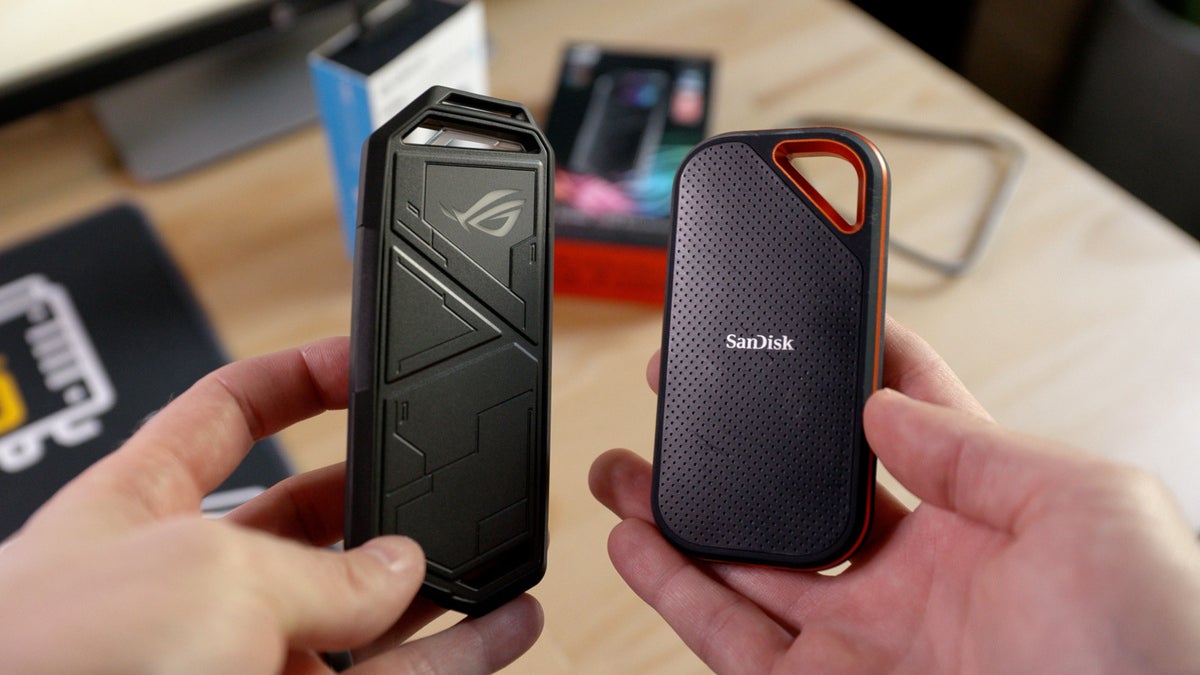[ad_1]
If you’ve been eyeing one of the big-name high-performance portable SSDs but don’t want to pay the high prices—just build your own. Yes, you can skip those big-brand prices by building your own portable SSD using off-the-shelf parts, getting the same performance and typically a lower price, too.
 Adam Patrick Murray/IDG
Adam Patrick Murray/IDGBuilding your own portable SSD is easy.
What type of SSD should you pick?
You’ll first want to pick out a USB SSD enclosure, which can be found on sites like Newegg or Amazon, and at other electronics stores, from around $10 to $50. Before you shop, you’ll want to know what kind of enclosure to buy. Much of that depends on what kind of SSD you want to put inside of it.
 Adam Patrick Murray/IDG
Adam Patrick Murray/IDG2.5-inch SATA SSD (left) vs M.2 NVMe SSD (right)
There are 2.5-inch SATA SSDs like this SK Hynix Gold S31 we reviewed. These offer very good speeds, which can reach about 560MBps for reading, but they fall short of the even faster M.2 PCIe or NVMe SSDs.
If you want to build your own USB portable drive to rival the high-end, big-brand portable SSDs, you’ll want to buy a PCIe or NVMe SSD enclosure. While both types are equally easy to make, and the 2.5-inch SATA SSD is usually more than enough, I’m going to focus on an NVMe drive in this video.
Fore more information about SSDs you could buy for this project, check out our roundup of the best SSDs.
 Adam Patrick Murray/IDG
Adam Patrick Murray/IDGAsus ROG Strix Arion (left) vs SanDisk Extreme Pro (right)
For my example I’ll be building a drive using an Asus ROG Strix Arion enclosure (currently $54 on Amazon)—mostly because it has RGB for maximum flair! With an SK Hynix Gold P31 NVMe SSD inside, it can reach the maximum bandwidth out of the USB 3.2 Gen 2 interface. That’s basically around 1GBps. Like all USB drives, its backward-compatible with USB 3.0 and USB 2.0. This enclosure comes with both USB-C and USB-A cables.
How to build a portable SSD
Now that we’ve picked out the parts, let’s get to installing it.
- Before you build, first reduce any static electricity by touching a metal object such as a furniture leg.
- To open up the enclosure, use the included pick tool and insert it into the small pinhole near the USB port to pop the cover open. Put the cover aside and try not to touch the sticky thermal pads on the lid. The thermal pads wick heat from the high performance SSD into the aluminum body to help maintain performance.
- Unscrew the silver retention screw inside of the enclosure. If it’s too tight, use the handle of the pick tool to loosen it.
- Now take the M.2 SSD and insert it at a 15 degree angle into the slot in the enclosure. The side with the stickers is usually the top of the drive, and the side that gets inserted is the one with the exposed contacts with the notch in it. The semi-circle notch is the side that the retention screw will hold down.
- Insert the drive gently but firmly until the gold contacts are not visible. Now take the retention screw and seat it in the notch of the semi-circle of the M.2 drive. Tilt the drive down and screw the retention screw in place snugly.
- Take the cover of the enclosure and line it up along the edge away from the USB port, and tilt it into place. If the lid won’t go on, you may want to make sure you have the drive in the notch of the retention screw and not simply under it.
- With the lid on, slip on the rubber bumper and grab the cable you want to use. The cable with two USB-C connectors will allow the highest performance. This Gold P31 can reach faster speeds than what USB offers, so we are limited by the enclosure here, not the drive.
Just remember that the drive and enclosure aren’t the only things that determine how fast you can move files. The port you plug into matters as well. Generally, most laptops or desktop computers that will accept USB-C will usually offer the most speed. The older but far more common USB-A can vary from very slow to very fast.
How to format a portable SSD
One final step the drive may need before it’s recognized by Windows is to provision it within the operating system.
- Press Windows + X and select Disk Management. Disk Management should show you the drives attached to your computer, one of which will say “Unallocated” for your new drive. Make absolutely sure you are not selecting the primary drive of the PC you are using, or another drive you don’t intend to format.
- Right-click the drive that says Unallocated and select New Simple Volume.
- Select Next and then choose the volume size you want. Windows should default to the full drive capacity. Click Next twice to assign the drive path.
- The last window should be Format Partition. Click Next and then Finish, and Windows will partition and format your new drive for you.
Boom, your Portable SSD is now ready for use—and this one has RGB for even more nerd cred! But if you’d rather skip all this and buy one that is ready to roll, read our roundup on Best External Hard Drives.
[ad_2]
Source link